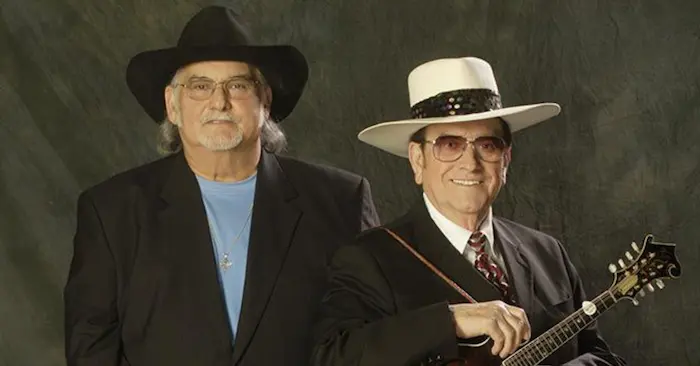Bluegrass music has deep roots in American history. Originating in the Appalachian region, it blends various musical traditions. Old bluegrass songs reflect the culture and experiences of early settlers. This article delves into the origins, development, and notable songs of bluegrass music.
I. Origins of Bluegrass Music
1. The Appalachian Roots
Bluegrass music is rooted in the Appalachian Mountains. Immigrants from the British Isles brought their musical traditions. These included ballads and folk songs. The music was influenced by African American blues and jazz. The combination of these influences created a unique sound.
2. Key Influences
Folk and Ballads: Early settlers sang traditional folk and ballads. These songs told stories and preserved history.
Blues and Jazz: African American musicians introduced blues and jazz elements. Syncopated rhythms and improvisation enriched the music.
Religious Music: Hymns and spirituals were also important. Many bluegrass songs have religious themes.
3. Instruments and Techniques
Bluegrass music is known for its distinctive instruments. The banjo, fiddle, mandolin, guitar, and upright bass are staples. Each instrument plays a crucial role. The banjo provides a rhythmic drive. The fiddle adds melodic lines. The mandolin and guitar contribute harmony and rhythm. The upright bass anchors the ensemble.
II. Development of Bluegrass Music
1. The Father of Bluegrass: Bill Monroe
Bill Monroe is considered the father of bluegrass. He formed the Blue Grass Boys in 1939. Monroe’s band set the standard for bluegrass music. His high-pitched singing and mandolin playing were influential.
2. The Role of Radio
Radio played a significant role in popularizing bluegrass. The Grand Ole Opry broadcasted bluegrass across the nation. This exposure helped the music gain a wider audience.
3. Key Figures in Bluegrass
Lester Flatt and Earl Scruggs: Members of Monroe’s Blue Grass Boys, they later formed their own band. Scruggs’ three-finger banjo picking style became iconic.
Ralph and Carter Stanley: The Stanley Brothers were known for their tight harmonies and soulful songs.
The Osborne Brothers: Their innovative approach included the use of electric instruments.
4. The Golden Age of Bluegrass
The 1940s and 1950s are considered the golden age of bluegrass. During this time, many classic bluegrass songs were written. Bands toured extensively, spreading the music’s popularity.
III. Notable Old Bluegrass Songs
1. “Mule Skinner Blues”
“Mule Skinner Blues” is a classic bluegrass song. It was popularized by Bill Monroe in 1940. The song tells the story of a mule skinner seeking work. Its catchy tune and lively rhythm made it a favorite.
2. “Foggy Mountain Breakdown”
“Foggy Mountain Breakdown” was composed by Earl Scruggs. Released in 1949, it is an instrumental masterpiece. The song showcases Scruggs’ banjo skills. It became an anthem for bluegrass music.
3. “Man of Constant Sorrow”
“Man of Constant Sorrow” is a traditional song. The Stanley Brothers recorded a famous version in 1951. The song’s melancholic lyrics and haunting melody resonate deeply.
4. “Blue Moon of Kentucky”
“Blue Moon of Kentucky” was written by Bill Monroe. Released in 1946, it is a bluegrass standard. The song was later covered by Elvis Presley, blending bluegrass and rockabilly.
5. “Rocky Top”
“Rocky Top” is a bluegrass song by the Osborne Brothers. Written in 1967, it quickly became a hit. The song celebrates life in the mountains of Tennessee.
IV. Themes in Old Bluegrass Songs
1. Life in the Mountains
Many bluegrass songs depict life in the mountains. They describe the beauty of nature and the hardships of rural life. Songs like “Rocky Top” celebrate the simplicity of mountain living.
2. Love and Heartbreak
Love and heartbreak are common themes in bluegrass music. Songs often tell stories of lost love and longing. “Man of Constant Sorrow” is a poignant example.
3. Work and Struggle
Songs about work and struggle are prevalent. “Mule Skinner Blues” is about a man seeking employment. These songs reflect the daily challenges of early American life.
4. Religion and Spirituality
Religious themes are significant in bluegrass music. Many songs are spiritual or have religious overtones. Hymns and gospel songs are often performed in a bluegrass style.
V. The Legacy of Bluegrass Music
1. Influence on Other Genres
Bluegrass has influenced many other music genres. Country, folk, and even rock music have borrowed elements from bluegrass. Artists like Johnny Cash and Bob Dylan were inspired by bluegrass.
2. Preservation and Revival
Efforts to preserve and revive bluegrass music have been ongoing. Festivals, such as the Bluegrass Festival in Kentucky, celebrate the genre. Organizations like the International Bluegrass Music Association (IBMA) promote bluegrass.
3. Modern Bluegrass
Modern bluegrass artists continue to honor the tradition. Bands like Alison Krauss & Union Station blend traditional and contemporary elements. The genre remains vibrant and evolving.
See Also: A Deep Dive into Rancheras: a Genre Rooted in Mexico
VI. Conclusion
Old bluegrass songs are a vital part of American music history. They reflect the culture and experiences of early settlers. The music’s unique sound and heartfelt themes resonate across generations. From the Appalachian roots to modern revivals, bluegrass continues to captivate audiences. Its legacy lives on in the timeless melodies and stories of old bluegrass songs.

